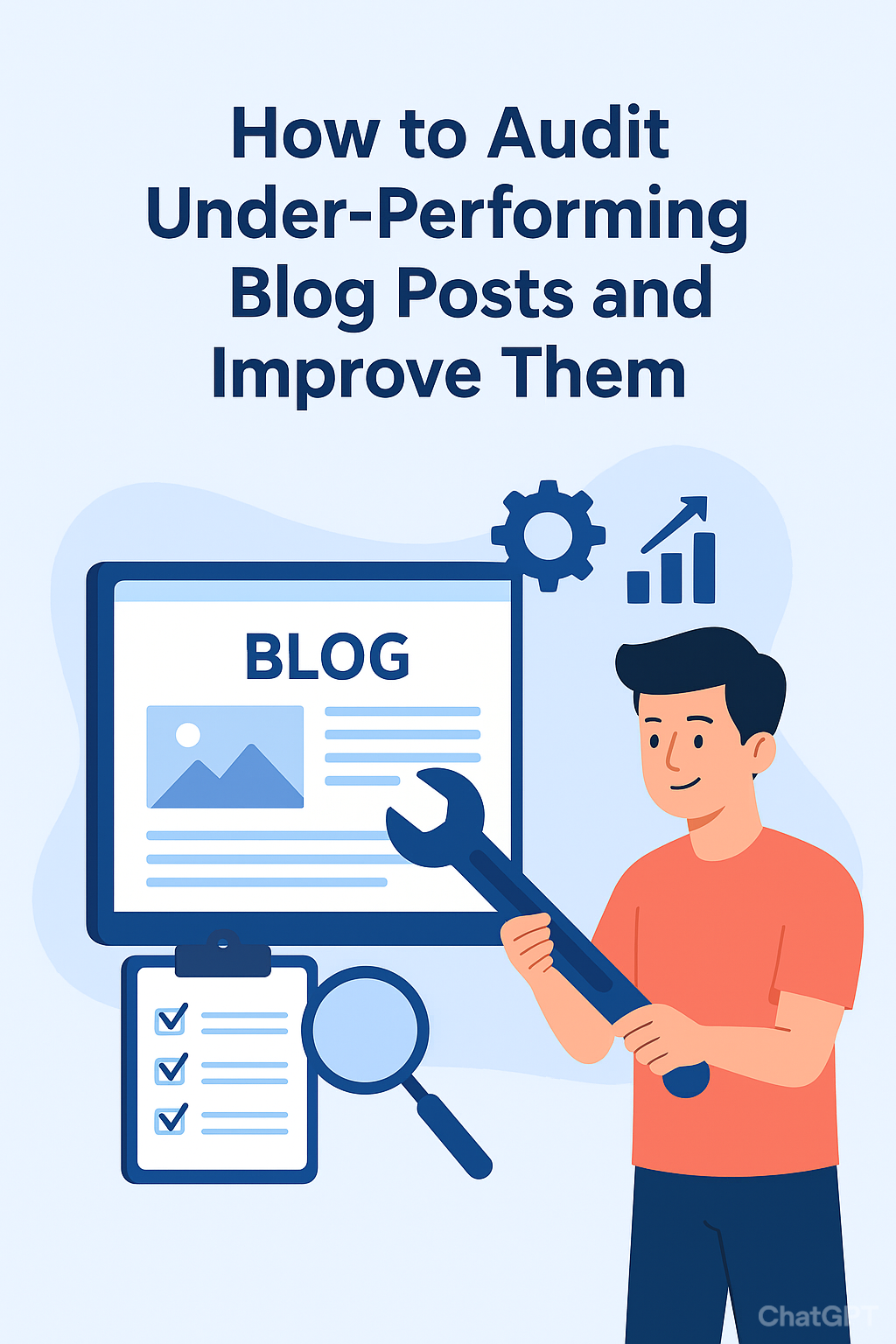Even the best content can lose momentum over time. Maybe your blog post once ranked well, but traffic has dipped. Or perhaps it never gained traction in the first place. Either way, learning how to audit under-performing blog posts can turn quiet pages into steady traffic generators.
This guide walks you through a practical, data-driven process to identify what’s wrong and how to fix it.
1. Identify Under-Performing Posts
Start by defining what “under-performing” means for your site. Common indicators include:
-
Low organic traffic despite good content
-
Falling rankings for target keywords
-
High bounce rate or short time on page
-
Few or no conversions
Use tools like:
-
Google Analytics 4 (GA4) to see pages with low traffic or high exits
-
Google Search Console for impressions, CTR, and ranking changes
-
Ahrefs, Semrush, or Ubersuggest to find declining keyword positions
SEO Tip: Sort your blog posts by traffic and engagement, then focus on the bottom 20%. These are your best opportunities for growth.
2. Reassess Search Intent
Sometimes content fails because it no longer matches what searchers want. Search intent changes — especially for competitive keywords.
Ask:
-
Does this article answer what users are actually searching for today?
-
Is it too shallow, outdated, or overly promotional?
-
Would someone searching this keyword be looking for information, comparison, or purchase guidance?
Use the SERP (Search Engine Results Page) as your guide. Review the top 5 ranking pages — note their format, depth, and focus. Align your post with that intent while keeping your unique voice.
3. Refresh Outdated Information
Google favors fresh, relevant content. If your post mentions tools, prices, statistics, or trends from more than a year ago, it’s time for an update.
Quick improvements include:
-
Replace outdated data with 2024–2025 statistics
-
Add new expert quotes or sources
-
Update screenshots and visuals
-
Improve readability with subheadings and bullet points
SEO Tip: Don’t just change a few words — aim for at least 25–30% new content to trigger a stronger freshness signal.
4. Optimize for Keywords and Readability
Revisit your keyword strategy. Your main keyword should appear naturally in:
-
The title (H1)
-
First paragraph
-
At least one subheading (H2 or H3)
-
Meta description
-
Image alt text
Use related terms (LSI keywords) to strengthen relevance. Example for this article: content audit, blog optimization, SEO improvement checklist, update old content.
Then, ensure readability:
-
Keep sentences under 20 words
-
Use short paragraphs (2–3 lines)
-
Add white space and clear formatting
5. Enhance User Experience
Even great writing can fail if the page is clunky. Check your site for:
-
Slow loading speed (use PageSpeed Insights)
-
Mobile responsiveness
-
Broken links or outdated embeds
-
Intrusive popups that hurt engagement
Improving UX helps reduce bounce rate — a key behavioral signal for Google’s ranking systems.
6. Strengthen Internal Linking
An overlooked but powerful fix is better internal linking.
Link to newer, related posts that add value for the reader. Also, find newer high-performing posts and add links to your refreshed article — signaling its importance to search engines.
SEO Tip: Use descriptive anchor text that matches the article’s focus keyword.
7. Add Rich Media and Engagement Elements
Visuals boost both engagement and ranking potential. Add:
-
Custom images, infographics, or charts
-
Short videos summarizing your key points
-
Click-to-tweet quotes or callouts
These keep users on your page longer and can encourage sharing.
8. Update the Publish Date
Once you’ve made major improvements, update the publish or “last updated” date.
Google notices this and may re-crawl the content faster.
Avoid faking it — ensure you’ve truly added new, relevant value before changing the date.
9. Promote Again
After updating, don’t just wait for organic traffic. Re-promote your improved article:
-
Share it on LinkedIn, X (Twitter), and Facebook
-
Add it to your email newsletter
-
Reach out to influencers or partners for backlinks
Even a small promotional push can help Google rediscover your post faster.
10. Monitor and Measure
Track your results for 30–60 days. Look for:
-
Improved rankings for target keywords
-
Increased CTR from search
-
More time on page and lower bounce rate
-
Higher conversions (signups, sales, or shares)
Use Google Search Console’s “Compare Dates” feature to measure pre- and post-update performance.
Final Thoughts
Learning how to audit under-performing blog posts is one of the highest ROI activities for content marketers. Instead of constantly producing new content, breathe new life into what you already have.
With the right analysis, updated information, and smart optimization, your older posts can become powerful drivers of organic traffic once again.

Data-driven editor at CliqSpot, transforming raw analytics into actionable growth strategies for modern businesses.

Leave a Reply